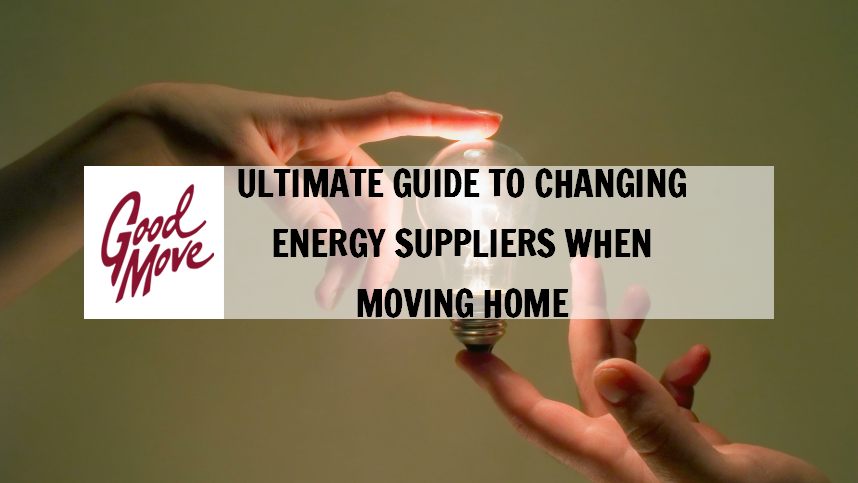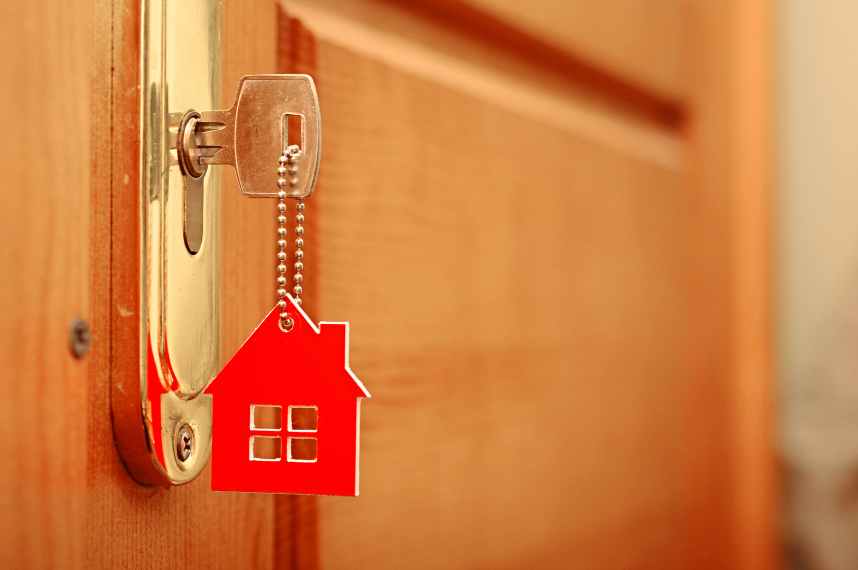
Ultimate Guide to Changing Energy Suppliers When Moving Home
Moving home is the process of uprooting your lives and moving elsewhere.
It should come as no surprise then, that complications arise, and difficulties unearth themselves as time goes on.
One of the biggest problems many people face is what to do about their energy suppliers when moving from one home to another.
There are a few things that you should be doing throughout the process of moving house to make your life that little bit easier.
If your looking for some advice, you’ve come to the right place. Here are the top ways to change energy suppliers when moving home:
Table of Contents
Before Your Move
1. Contact Your Current Energy Supplier
This is the first step you should consider before doing anything else. Each energy supplier is different, but common consensus shows you should leave no less than 48 hours before contacting your energy supplier and telling them of your move.
The optimal time to contact them would be two weeks before your moving date. This gives you enough time to address any questions or problems with previous bills, as you still have access to your energy meter.
2. Supply Your Current Energy Supplier with New Contact Details
Often overlooked or forgotten, is supplying your current energy supplier with your new details: address, home phone number, etc.
Make sure you supply these to your energy supplier; otherwise, they may end up forwarding the final bill to your old address. This could lead to many problems and fines if you do not pay the final amount for your energy bill.
Moving Day
Take A Final Meter Reading When You Move
On your moving day, you need only remember one thing relating to energy bills.
Take a picture of your final meter reading and send this on to your energy supplier. You needn’t send it on the day, but if you have the reading or a picture of the reading, make sure to send it within the next few days following your move.
Keep a copy of the meter reading for yourself. This means that should your final bill have a different or incorrect reading, you can call them and dispute the bill.
After Your Move
1. Contact Your Current Energy Supplier at the New Home
Your first port of call after moving home is to contact your new energy suppliers. Inform them you have moved in and provide them with all the details necessary to contact you should they need to.
As well as providing your details to them, make sure to give them the new metre reading in the home. This ensures that both you and the energy company are aware of the metre reading upon your move-in date.
Many people believe they start paying the energy bills once they move in, however, if you have owned the house for a period of time before move-in, you will be charged since the day you took ownership of the property.
2. Automatic enrolment on a tariff
When you first move into the property, you will be put into a ‘deemed contract’ with the property’s current energy supplier.
Unfortunately, these contracts are usually the most expensive type on the market. The longer you leave finding a new energy supplier/finding a better tariff with your current energy supplier, the more expensive it will be in the long run.
The good news is that you can change energy supplier from the day you move in / take ownership of your property. This is definitely something that should be addressed very quickly after moving in.
3. Conduct a home energy audit of your new home
Nowadays, an energy certificate is standard when moving home. If the house you are moving to does not have one, then your next move should be to get an energy audit.
This will show you your energy efficiency levels as well as where improvements can be made in the house to improve energy efficiency. Whether that be through heating systems, insulation or energy-wasting ovens.
4. Pay your final energy bill of your old house
Within the first couple of weeks living in your new home, you should receive either an e-mail or a letter in the post detailing your final bill and how much you owe.
If the final energy meter reading on the letter is incorrect, then you can refer back to the energy reading you took when you left and contact the energy supplier and dispute this.
As energy bills are based on estimates, you may find that you are actually owed money due to incorrect energy usage predictions. Therefore, there should be either a cheque alongside this letter or a refund in your bank account. If it is refunded directly to your bank account then make sure to check that this has gone through.
5. Does your new property have a prepayment meter?
If your property has a prepayment meter, then make sure to get in touch with your energy supplier ASAP. Avoid putting money on to the meter, in case the previous homeowners have debts on the meter.
You may, unfortunately, have to put money on the meter. Make sure you mention this to the energy supplier and ask that they void all previous debts on the meter so that you don’t end up out of pocket.
If you plan on keeping the meter, then make sure you’re aware of the local top-up spots. The last thing you want is to run out of money on the card and not know where to go to top-up.
6. Upgrading from your prepayment meter
A prepayment meter is slightly outdated when compared with modern technology such as a smart meter.
Many stick with them primarily because it helps them keep track of how much they are spending each month on their energy.
Unfortunately, whilst this seems reasonable, in retrospect, it’s actually more expensive than signing up for a tariff. The cheapest prepayment meter will almost certainly cost you more than the cheapest direct debit deal.
On top of this, you will find yourself going to the shop to top up your meter far more regularly in the winter than you first thought.
Finally, you risk running out if you don’t top up the card regularly. Running out of electricity can be very problematic for some, especially those who work at home and have a desktop PC.
Contact your energy supplier and see if you can change either to a smart meter or standard monthly tariff. You’ll be able to find a far better deal than the prepayment meter allows for you to have!
7. Look for a new supplier
The current energy supplier will rarely offer you the best prices. Changing energy supplier when moving home is very common and is often the best course of action.
Utilising an energy comparison tool is both free and impartial, making it the most efficient way to find a new energy company.
There are plenty of variables that you will need to consider when finding the right energy company for you. These include standard tariffs, duel tariffs, as well as special offers that companies offer throughout the year.
Property Types
Rented Accommodation
Instead of supplying your details to the energy company, the likelihood is that you will be contacting your landlord with your energy meter reading upon moving in.
As a tenant, you are allowed to switch energy suppliers as you are the one fronting the bills. You do not need to get your landlord’s approval to switch energy suppliers.
Source: Businesselectricityprices.org.uk
Business Premises
Just like energy supplier when moving house, you will be automatically enrolled into a deemed contract. These are costly rates and it’s worth trying to negotiate a better tariff or deal with the current energy supplier.
If thy cannot offer you anything better, then your best move is to look elsewhere (refer to above sections of this article).
Doing this may require you to have certain documents at hand such as a recent energy bill, the current contract end date, the registration information of the business and the serial numbers of the energy meter (MPAN and MPRN).
Moving Home and Ready to Change Energy Suppliers?
Changing energy supplier when moving house may seem daunting at first, but hopefully, this article has helped ease your mind a bit. Are you now looking to move?
GoodMove are here to help. We have over 35 years’ experience handling removals throughout the UK and Europe.
Our customer-driven approach to removals has earned us critical acclaim. We believe our written testimonials, found on Reference Line, are our testament to the service we deliver.
We also offer flexible self-storage options to our customers either as part of a tailor-made removals package or as a standalone service.
To find out how GoodMove’s removals service can work for you, don’t hesitate to contact us on the number listed above or use the quick quote form.
Get a Quote
Recent Posts
- Clear the Clutter After Christmas: How GoodMove Helps You Store Belongings Safely in Winter 11th Dec 2025
- Why You Should Start Planning Your New Year Move Now 05th Dec 2025
- Moving House in Winter: 9 Expert Tips to Winter-Proof Your Move (2025 Guide) 04th Dec 2025
- 10 Best Norfolk Seaside Towns to Live or Visit 28th Nov 2025
- 9 Best Kent Commuter Towns for 2025 21th Nov 2025
- Best Places to Retire in Essex and Suffolk 14th Nov 2025
- Living in Chatham – The Ultimate Moving Guide 06th Nov 2025
- Living in Ipswich – 27 Reasons to Move to Suffolk 30th Oct 2025
- Understanding Your Removals Quote: What’s Included and What’s Not? 23th Oct 2025
- Commuting from Essex to London: The Ultimate 2025 Guide 16th Oct 2025
- How to Move Large or Awkward Furniture (And When to Call the Pros) 09th Oct 2025
- How To Move House in Just Two Months – 2025 Guide 03th Oct 2025
- How To Declutter Before Moving House – A Minimalist’s Guide 24th Sep 2025
- Change of Address Checklist 19th Sep 2025
- GoodMove Proudly Supports the Dedham Art Society’s Summer Exhibition 08th Sep 2025
- A Guide to Self-Packing vs. Professional Packing Services 04th Sep 2025
- Living in Epping – Moving to the Essex Market Town 28th Aug 2025
- Top 11 Reasons That Prevent People From Moving Home 21th Aug 2025
- 7 Great Reasons to Start Living in Gillingham 15th Aug 2025
- 2025 Guide: Average House Prices in Colchester and Market Trends 07th Aug 2025





